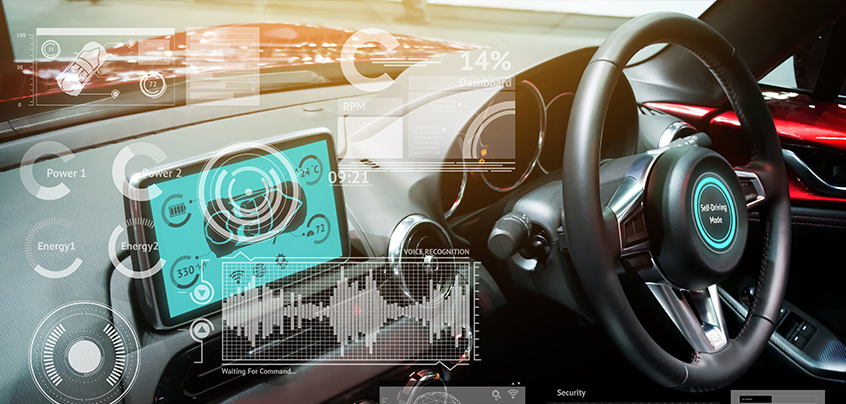



11, April 2019

Electric vehicles is the market of automobiles that partially or fully rely on electricity for power. It uses the stored energy in the battery to enhance the traction motor or the car that is able to power up on heat engine or even a hybrid electric vehicle. Although, electric vehicles contribute a small share in the global automotive industry, owing to the undergoing transformation; it holds the potential to make the conventional automotive vehicle (based on a combustion engine) obsolete.
The companies in the global electric vehicle market are adopting varied strategies to sustain their position in the dynamic market. The major players in the market include BYD Company Ltd, Daimler AG, General Motors, Nissan Motor Co., Ltd., Tesla, Inc., and others. The top 5 companies in the global electric vehicle market accounted around 45% share in 2016, of which Tesla holds around 10%, mainly contributed by the rising strategic initiative and subsidy incentive.
Tesla’s strive to enhance change in the Automotive industry
Tesla did not originate electric cars; Robert Anderson, a Scottish inventor, fabricated the first EV in 1832. But, Tesla was the one to commercialize and lead the way for the electric cars from the time of the company’s establishment in 2003. No other established automotive producers were building electric cars until Tesla in 2008 announced its first luxury electric car - the Tesla Roadster.
Since then, established automakers with capital, consistent suppliers and expert supply chains are evolving and churning fully electric or hybrid electric cars, owing to the demand from consumers and governments for sustainable, low-emissions zone possibilities. Today, Automakers are striving to inbuilt artificial intelligence (AI) in their cars. The key auto companies and the United Congressman are considering autonomous vehicles (AVs) and their innovations and legalization. Moreover, the software design of Tesla is the highest development; Tesla vehicles are upgrading their vehicle’s software with over-the-air updates. Technological upgradation in cars is aiding Tesla to sustain its lead in the market. However, delay in delivery, inconsistent cars and profitability are the key struggles of the company, which is affecting its portrayal as an innovator and producers.
Tesla’s leadership in the electric vehicle market
Aggressive Sales Goal- According to IEA's report 2017, Tesla announced to achieve 0.5 million annual electric car sales by 2018 and 1 million by 2020. These numbers confirm tesla’s plans for ambitious sales goals. None of its rivals has announced sales goal anywhere near to it. Moreover, even the large, established Chinese players altogether have deliberated to manufacture 4 to 5 times electric vehicles as Tesla. On the contrary, Chevy Bolt has the high-value EV on the market, yet has deliberated the most reticent sales.
The breakdown in Battery Cost- In regards to battery costs, Tesla is assumed at the lowest when compared to its competitors in the industry. In 2016, the battery packs used in the latest EV models were amid $250 and $300 per kWh according to the Department of Energy. Nevertheless, Tesla and Panasonic has alleged that the cost of their battery packs is around $180 and $200/kWh.
Expansion In Production Volume- The augment in the production quantity can decrease costs substantially and increase the pack size. The Department of Energy estimates that the augmenting production volumes from 25,000 units to 100,000 units can decrease per-kWh costs by 13%. Therefore, rising pack size from 60 kWh to 100 kWh, ranging from 200 km to 320 km will result in 17% of cost reduction.
Small Change Big Thing Charging Capabilities - when it comes to charging, Tesla leads the game. Its Level 2 equipment can power in up to 17.2 kW, which stands out in the overall EV market. Most Superchargers charge at 120 kW, even some up to 145 KW compared to the highest level that the contending CHAdeMO and CCS standards are assembling. Also, the company has planned to enhance it higher by hinting something as Supercharger V3, offering higher charging levels than 350 KW.
Longest Range Electric Vehicles Makes All The Difference- Tesla leads its competitors in the operating range, with flagship Model S sedan in its top P100D version, which runs as claimed 337 miles on a single charge. Even the 75D recapitulation integrated with the car’s smallest battery achieves an estimated 275-mile range.
Tesla is facing tremendous challenges, and its roots lay down in the company’s supply chain and finance. However, it has enthusiastically tempted criticism compared to its rival companies as the automaker is audacious to enunciate its striving along with the prudent thought for the future of the automotive industry.

Prevalent cases of terrorist attacks in today’s world is increasing the need for severe standards of security for public safety, and the global market for biometric technology scrupulously accommoda..
Prevalent cases of terrorist attacks in today’s world is increasing the need for..